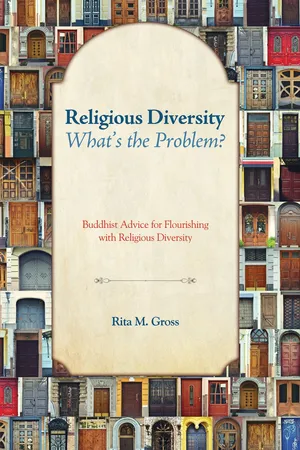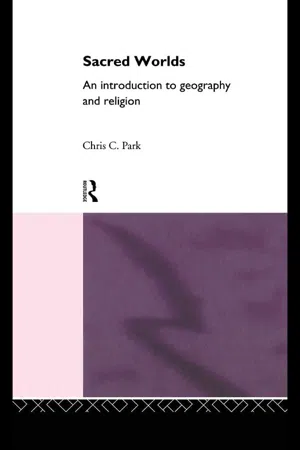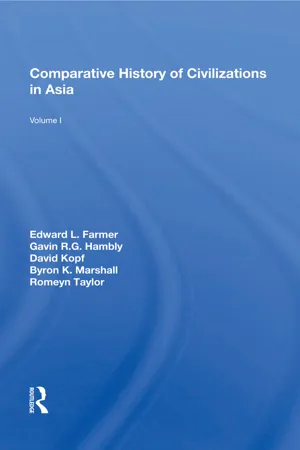Geography
Universalizing Religions
Universalizing religions are religions that seek to spread their beliefs and practices to all people, regardless of their ethnicity or location. Examples of universalizing religions include Christianity, Islam, and Buddhism. These religions often have a strong missionary component and seek to convert non-believers to their faith.
Written by Perlego with AI-assistance
Related key terms
Related key terms
1 of 4
Related key terms
1 of 3
3 Key excerpts on "Universalizing Religions"
- eBook - ePub
Religious Diversity—What's the Problem?
Buddhist Advice for Flourishing with Religious Diversity
- Gross(Author)
- 2014(Publication Date)
- Cascade Books(Publisher)
An ethnoreligion is truly a way of life in which it is almost impossible to separate religion from culture. Customs and behaviors are far more important than beliefs, which can be quite flexible. Typically, matters that are considered secular in the context of many Universalizing Religions, such as diet, dress, marriage and divorce, and laws regulating society and politics are far more important than doctrines, beliefs, and creeds. The only way to convert to an ethnoreligion is to join the society and be adopted by its members. Ethnoreligions are usually quite localized and usually have no dreams of empire or universal relevance.Universalizing Religions, by contrast, are based on a set of ideas that transcend culture. These must be portable, abstract, and general enough to attract followers from a wide variety of cultures, and to attract followers away from their cultures of origin. A very detailed code for daily living is usually not as important to a universalizing religion as are its core beliefs and doctrines, but it must believe that its message is universally relevant, and that all people would benefit from hearing and absorbing that message. Almost by definition, a universalizing religion has spread widely from its point of origin. A portable religion, of course, must have porters, people, usually men, who have good reasons to travel extensively and little to tie them to any specific location. Merchants, monks, and soldiers are the best candidates, and they have had a lot to do with the spread of the Universalizing Religions.There are three major Universalizing Religions: Buddhism, Christianity, and Islam. Each claims to have a message that would be relevant and useful to everyone, no matter what their culture or daily lifestyle might be. Though difficult issues often arise, each religion tries not to disrupt the daily lifestyle of their new converts too much. However, Islam does impose a fairly strict code of daily living; Buddhism does prohibit certain occupations, such as butchering, hunting, and soldiering; and Christianity usually insists on monogamy and other aspects of its code of sexual behavior. Christianity and Islam both have vigorous missionary movements and have often spread through conquest. In many parts of the world, one of them holds almost a monopoly on religious affiliation. They also both claim to be the religion that God has given to humanity, thus making exclusive truth claims for themselves. Both have justifiable reputations for engaging in wars of religion,7 - eBook - ePub
Sacred Worlds
An Introduction to Geography and Religion
- Chris Park(Author)
- 2002(Publication Date)
- Routledge(Publisher)
Many religions have changed a great deal as they have spread and grown, so that the form they display today is often far removed from their original form. Through dispersion the main religions have come into contact with and been influenced by different cultures and customs, some have divided into subgroups (sects), and many have changed forms of worship and organisation. Modern Christianity, for example, is different to what it was like in the first century after Christ. Similarly, Hinduism has evolved a great deal over nearly thirty centuries.Part of the explanation of religious distributions lies in the relationships between ethnic and universal religions (see Chapter 2 , pp. ) (Broek and Webb 1973). Each of the major universal religions (Christianity, Islam and Buddhism) grew from within earlier ethnic religions, so they started with similar roots but evolved into much more prolific branches.One of the particular strengths of universal religions, as far as survival and growth are concerned, is their adaptability to local cultures. A religion that is adaptable can be modified to better suit new conditions it encounters, both as it spreads through space and as it survives through time. The flourishing universal religion is thus able to assimilate dimensions of ethnic religion, which increases its attractiveness to new converts and promotes its prospects of long-term survival. This is illustrated in the global pattern of the three main Christian groups—Protestants, Roman Catholics and Eastern Orthodox (Figure 3.1 )— which clearly reflects the interaction of universal and ethnic factors.The universal religions have an inbuilt dynamic towards expansion and diffusion, because they deliberately seek new converts. Thus, missionary zeal and endeavour must also be considered in the search for an explanation of contemporary religious patterns. Tyler comments thatChristianity is the most aggressively ambitious religion, in the sense that it endeavours to spread the Gospel of Christ throughout the world…. Islam, and to a lesser extent Buddhism, are also missionary religions, but neither has had the same success in converting the ‘unfaithful’ to its beliefs as has Christianity. - eBook - ePub
- Edward L. Farmer(Author)
- 2019(Publication Date)
- Routledge(Publisher)
In each case these religions provided a new cultural unity, replacing the political unity lost with the collapse of the old universal empires and their successors. The changes brought about by the permeation of these new types of religious beliefs and institutions were to leave a lasting impression on both elite and popular culture. The task of this chapter, therefore, is to distinguish these universal religions from each other and earlier types, analyze the processes by which they spread, and compare the initial phases of their impact upon the areas in which they took root.PROCESSES The Formation of Universal Religions a. Universal theism b. Salvation through an intermediary c. Immortality in paradise d. Popularization of traditions The Spread of Universal Religions e. Initial diffusion of universal religions f. Adaptation of indigenous culture g. Domestication of foreign elements PATTERNS 1. Islam in West Asia 2. Hinduism in South Asia 3. Mahayana Buddhism in East Asia 6. UNIVERSAL RELIGIONSMap 22 Universal religionsProcesses
The rise of new types of religions in the centuries following the breakdown of the classical patterns of the universal empires was to have far-reaching significance for the history of civilizations in Asia. The conversion to Islam in West Asia, to Hinduism in South Asia, and to Mahayana Buddhism in East Asia produced profound changes both because of the nature of these religions themselves and because of their role in the diffusion of culture across the boundaries of these civilizations. Much of the entire range of human life became permeated with a god-centered spirituality, as a new ethos of divine purpose came to pervade artistic endeavor, economic practices, political principles, social customs, and man's view of his own past and future. Human history itself was sanctified by the concept of divine providence. Not only did the classical heritage of each of these civilizations undergo complex alterations, but each was infused with new elements from outside this tradition. As in the case of Christianity, the universal religion of medieval Europe, each of these religious ideologies was in some sense alien in origin; each arose in one cultural area and had its greatest success and most enduring influence in another. As they spread they served as vehicles for the diffusion of social institutions and cultural values that were often foreign in style and substance as well as in origin. Thus two general questions will be considered in this chapter: First, what constituted the central aspects of these religions? Secondly, how were they integrated into the life of the recipient civilizations?
Index pages curate the most relevant extracts from our library of academic textbooks. They’ve been created using an in-house natural language model (NLM), each adding context and meaning to key research topics.
Explore more topic indexes
Explore more topic indexes
1 of 6
Explore more topic indexes
1 of 4


